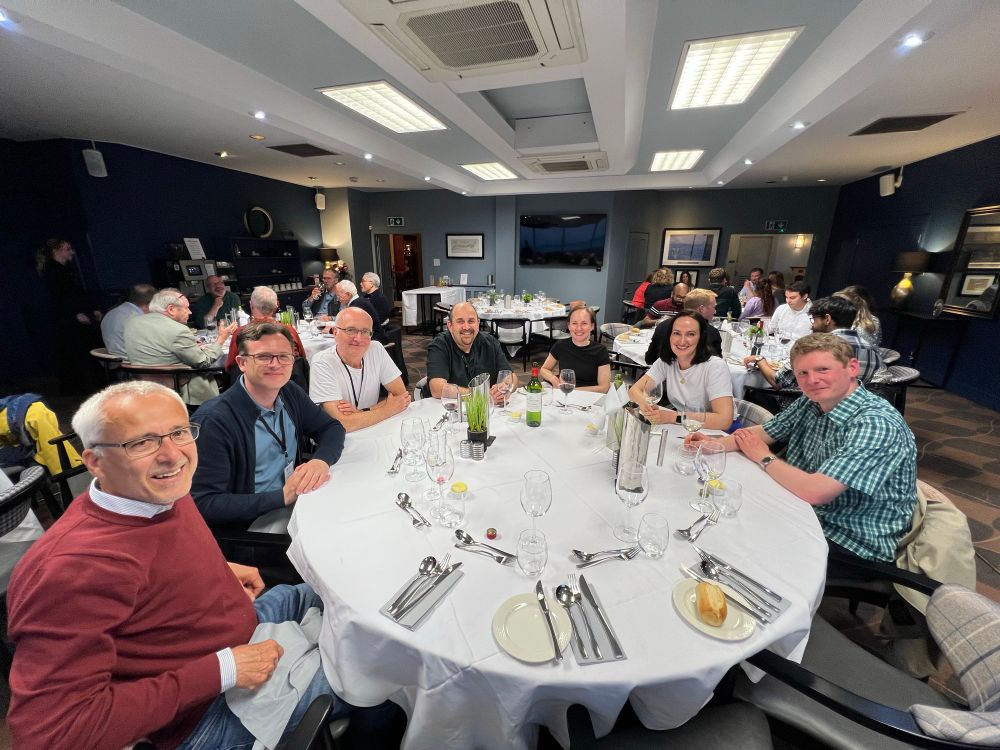Thank-you @casanovalab.bsky.social for the kind invitation to be a participant at your celebratory Novo Nordisk Prize Symposium. I appreciated being able to present alongside a great array of leading researchers, & to meet so many welcoming people in the field of Inborn Errors of Immunity! Congrats!
26.09.2025 11:54 — 👍 4 🔁 0 💬 1 📌 0

TRIM28 is a target for paramyxovirus V proteins
Author summary Host recognition of viral nucleic acids is fundamental for stimulating antiviral immunity. To prevent aberrant immune activation, cells must precisely differentiate “non-self” from “sel...
'TRIM28 is a target for paramyxovirus V proteins'. Work led by Gauthier Lieber seeks to address whether host activation of endogenous retroelements contributes to antiviral defences. In support of this idea, he describes a viral mechanism that might limit this host response.
doi.org/10.1371/jour...
09.09.2025 08:46 — 👍 4 🔁 4 💬 0 📌 0
Regulated localization of transposable element #RNA during #influenza A #virus #infection.
-> www.embopress.org/doi/full/10....
16.06.2025 13:09 — 👍 2 🔁 1 💬 0 📌 0

A nice photo from last week’s ’Celebration of 50 years of Virology’ in St Andrews - marking a milestone in the distinguished career of Rick Randall - a great virologist, colleague and friend - congratulations Rick!
20.05.2025 20:10 — 👍 16 🔁 1 💬 1 📌 0
It's a great idea to involve those interested in IFNs at different levels (not just molecular/infections, but also cancer community, clinicians and those using IFNs as treatments etc). Would love to do a similar thing in ZH - will be a lot to learn from the different perspectives. Good luck with it!
09.05.2025 14:21 — 👍 1 🔁 0 💬 0 📌 0
Disappointed to miss out as a non-Heidelbergian! Sounds like a great meeting to bring together all your local Interferon friends!
09.05.2025 12:30 — 👍 4 🔁 0 💬 1 📌 0

Anti-interferon autoantibodies are always on my mind....even at Easter!
22.04.2025 06:31 — 👍 3 🔁 0 💬 0 📌 0

Type I interferon autoantibody footprints reveal neutralizing mechanisms and allow inhibitory decoy design. New study from Kevin Groen, Benjamin Hale (@benhale.bsky.social) and colleagues @virology.uzh.ch: rupress.org/jem/article/...
#Autoimmunity #Immunodeficiency #InfectiousDisease
27.03.2025 13:46 — 👍 12 🔁 6 💬 1 📌 0

An atlas of protein phosphorylation dynamics during interferon signaling @benhale.bsky.social
www.pnas.org/doi/10.1073/...
27.03.2025 03:39 — 👍 21 🔁 3 💬 0 📌 0
Decoys Restore Antiviral Immune Defense
A follow up on @benhale.bsky.social and colleagues' research published in @jem.org : How "decoy molecules" intercept harmful auto-antibodies, restoring antiviral immunity.
www.news.uzh.ch/en/articles/...
26.03.2025 09:54 — 👍 4 🔁 1 💬 1 📌 0

AutoAbs neutralizing IFN-Is exacerbate severe viral diseases. Groen, @benhale.bsky.social et al. @virology.uzh.ch identify IFN-I regions commonly targeted by these autoAbs and develop a proof-of-concept decoy strategy to alleviate pathogenic effects. rupress.org/jem/article/...
20.03.2025 20:12 — 👍 10 🔁 4 💬 1 📌 2
Interferon research has a long history at the University of Zurich, Switzerland.
Charles Weissmann, Professor of Molecular Biology, led the group that first cloned interferon genes. This allowed large-scale production and facilitated the medical use of interferon.
@uzh-ch.bsky.social
05.03.2025 12:31 — 👍 7 🔁 1 💬 0 📌 0
INSERM researcher at Imagine Institute
Study Inborn Errors of immunity
Immunologist @casanovalab.bsky.social. Interest for rare genetic disorders affecting immunity. Located in @institutimagine.bsky.social @upcite.bsky.social
@hopitalnecker.bsky.social
Group leader at Leiden University Medical Centre
Innate immunity, antiviral immunity, inborn errors of immunity
Die hard HIV virologist focusing on ESCRTs & HIV budding and neuroAIDS; IISc alumnus; AAM Fellow; mBio editor mini reviews and mGems; Hubby to a virologist - Ganjam V. Kalpana
Immunologists who's interested in virus reservoir hosts
RNA Virologist working on zoonosis
Virologist & Research Group Leader at @unituebingen.bsky.social
Fascinated by viruses, innate immunity, evolution — and birds 🐦
#Virology #HERVs #Retrotransposons #Birds
Chair in Virology and Emerging Infectious Diseases, Liverpool School of Tropical Medicine.
Arboviruses, emerging viruses, viruses of parasites!
Cell Biologist. Membrane proteins, rhomboids, signalling, inflammation, cancer, unknome...
Head, Dunn School of Pathology, @UniofOxford
And other stuff
Enthusiastic about understanding what makes viruses tick and what makes humans sick
Virologist | Assistant Prof at Karolinska Institutet | Formerly, TWINCORE (AG Pietschmann), NYU (tenOever lab) and Oxford (Fodor lab)
https://tinyurl.com/48mzfe8f
Chair 5th Med Dept UMM, Heidelberg University
Kidney Transplantation and Cell Death Biology
Dr Philipp Kolb
Research group at the University Medical Centre Freiburg (Uniklinikum Freiburg). Interested in interactions between viruses and hosts.
Virologist, interested in virus evolution and innate immunity (and how they are linked). A member of the ICTV and striving to bring greater virus community engagement and understanding of virus taxonomy.
https://www.utu.fi/en/people/peter-simmonds
Institut Curie, Paris, France
https://minilien.curie.fr/ejggfa
Virologist and cinnamon bun baker.
Editor in Chief of the #NonProfit, #OpenAccess journal @plosbiology.org Former Chief Editor of Nature Microbiology.
#Virologist. #Feminist. #Spaniard in the UK. #Galician. #European always.
Views my own.
https://orcid.org/0000-0002-3666-5683
Virology Lab studying virus-host interactions at the Icahn School of Medicine at Mount Sinai in New York City, NY
Scientist, Virologist & Bioinformatician. Researching intra-host evolution and viral resistance development to improve patient care. Developing open-source software.
Cat owner, gardener, nerd, climber and artist.
Structural biologist and group leader at the Oxford Biochemistry Department. Interested in principles and molecular mechanisms underlying viral evolution and host changes.








